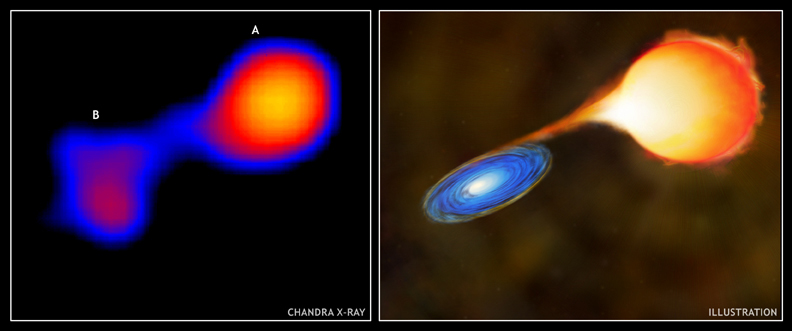Thursday, April 28, 2005
Cosmic Cannibal

Harvard astronomers using NASA's Chandra X-ray Observatory have snapped a stunning picture of a tiny dwarf star cannibalizing its giant neighbor.
The stars, called Mira A and B, are about 6.5 million miles apart (circa 1.5 light years), as far as the Sun and Pluto. They are 420 lights years away from us in the constellation Cetus (Whale).
The stars are connected by a bridge of burning matter. The small and dense Mira B is pulling off and gorging on gas from the huge and bloated Mira A, and burping bursts of X-rays as it feasts.
Or so people thought. The new images also reveal unexpected X-ray radiation from Mira A. The astronomers said that the "internal turmoil" in the bloated Mira A could "create magnetic disturbances in the upper atmosphere of the star and lead to the observed X-ray outbursts, as well as the rapid loss of material from the star in a blustery, strong, stellar wind. Some of the material in the wind from Mira A is captured in an accretion disk around Mira B, where collisions between rapidly moving particles produce X-rays."
Said Margarita Karovska of the Harvard-Smithsonian Center for Astrophysics:
"Before this observation it was assumed that all the X-rays came from a hot disk surrounding a white dwarf, so the detection of an X-ray outburst from the giant star came as a surprise."
Mira A, whose diameter is 600 times larger than the Sun, is a red giant, an aging star whose nuclear fuel of hydrogen and helium will soon burn out. Renaissance astronomers named the star Mira, which means "Wonderful" in Latin, since it would dim and brighten every 331 days. The blinking is caused by the much smaller Mira B passing in front of it. Mira B is thought to be a white dwarf star about the size of the Earth.